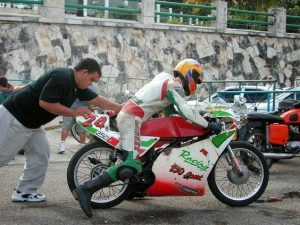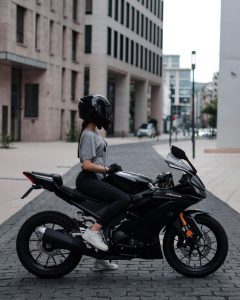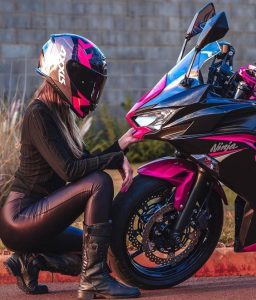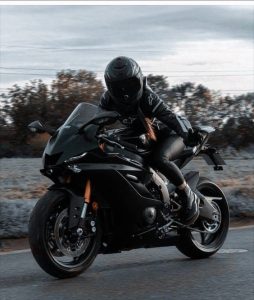Jun 19, 2024
Ready, Set, Ride: A Guide About How to start a Motorcycle
Mastering how to start a motorcycle is an exciting skill that unlocks the freedom of the open road. However, it’s important to prioritize safety before you hit the throttle. This guide will walk you through the steps of starting a motorcycle safely and effectively.
Important Note: Before attempting to start a motorcycle, ensure you have the proper safety gear, including a helmet, eye protection, jacket, pants, gloves, and boots. Additionally, never operate a motorcycle without a valid motorcycle license.
Preparation is Key
Before swinging your leg over the motorcycle, take a moment to prepare yourself and the bike. Here’s what to do:
Park on a level surface:
This will help prevent the motorcycle from tipping over when you start it.
Engage the parking brake:
This will ensure the motorcycle stays stationary while you’re starting it.
Perform a pre-ride inspection:
Briefly check your tires, brakes, lights, and fluid levels for any problems.

Understanding the Controls
Familiarize yourself with the motorcycle’s controls before starting it. Here’s a quick rundown of the essential ones:
-
Ignition switch: This switch turns on the motorcycle’s electrical system.
-
Kill switch: This switch cuts power to the engine and should be in the “Off” position when starting.
-
Clutch lever: This lever disengages the engine from the transmission, allowing you to shift gears without damaging the motorcycle.
-
Throttle: This controls the engine’s RPM (revolutions per minute). Twisting the throttle increases RPM, accelerating the motorcycle.
-
Front brake lever: This lever applies pressure to the front brakes.
-
Rear brake pedal: Pressing down on the pedal applies pressure to the rear brakes.
Finding Neutral
Locating neutral gear is crucial before starting the motorcycle. Here’s how:
-
With the clutch lever squeezed in: Find the gear shift lever with your left foot.
-
Shift gently up or down: You should feel the lever click into place when you find neutral.
-
Neutral indicator light: If your motorcycle has one, the neutral light will illuminate when you’re in neutral.
Starting the Engine (Electric Start)
Most modern motorcycles use an electric starter. Here’s how to start one:
-
Confirm the kill switch is in the “Off” position.
-
Keep the clutch lever squeezed in.
-
Locate the starter button: This button is typically located on the right handlebar.
-
Press and hold the starter button. While holding the button, crank the engine for a few seconds at most.
-
Once the engine starts, release the starter button.
Starting the Engine (Kick Start)
Some motorcycles, particularly older models, use a kick start. Here’s how to use one:
-
Follow steps 1-3 from the “Electric Start” section.
-
Stand next to the motorcycle on the side with the kick start lever.
-
Find the top dead center (TDC) of the engine stroke: Consult your owner’s manual for specific instructions on finding TDC for your motorcycle.
-
Place your right foot firmly on the kick start lever.
-
Give the lever a firm, downward kick. Don’t stomp on the lever.
-
Repeat steps 6-7 if the engine doesn’t start on the first try.
Safety Tip: If the engine doesn’t start after a few attempts with the kick start, there may be an underlying issue. Don’t continue trying to start the motorcycle.
Letting the Engine Warm Up
Once the engine starts, allow it to warm up for a few minutes before riding off. This allows the engine oil to circulate and lubricate the engine components properly.
- Rev the engine gently while waiting. Avoid revving the engine hard while it’s cold.
Once the engine is warmed up, you’re ready to go! Here’s how to proceed:
-
Release the parking brake.
-
Squeeze the clutch lever in.
-
Shift the motorcycle into first gear.
-
Slowly release the clutch lever while applying a gentle throttle. The motorcycle should begin to move forward.
It’s normal to feel nervous or stumble a bit when starting a motorcycle for the first time. Practice in a safe, controlled environment away from traffic until you feel comfortable.
Enjoy the Ride!
Mastering how to start a motorcycle opens the door to exciting adventures. Remember, with great freedom comes great responsibility. Here are some final thoughts to keep in mind:
-
Always prioritize safety: Wear a helmet and proper safety gear every time you ride.
-
Obey traffic laws: Never ride under the influence of alcohol or drugs. Be aware of your surroundings and ride defensively.
-
Respect other road users: Share the road and be courteous to pedestrians, cyclists, and other motorists.
By following these tips, you can ensure your motorcycle riding experience is enjoyable and safe for yourself and others. So get out there, explore the world on two wheels, and have fun!

Adventure Awaits!
Mastering how to start a motorcycle opens the door to exciting adventures. Remember, there’s a lot to learn about motorcycles beyond starting them. Here are some ways to delve deeper:
-
Motorcycle Customization: Many motorcycles can be customized to reflect your style and riding preferences. Research different options and accessories to personalize your motorcycle.
-
Explore Different Riding Styles: There are many styles of motorcycle riding, from touring to off-road riding. Research different styles and see what interests you!
-
Join the Motorcycle Community: The motorcycle community is a welcoming group! Connect with other riders through online forums or local riding groups. This is a great way to share experiences, learn from others, and find riding buddies.
Learning how to start a motorcycle is an important first step. By following the tips in this guide and continuing your education, you can become a safe and responsible motorcycle rider. So get out there, explore the world on two wheels, and have fun!

Additional things to consider
-
Fuel Efficiency: Motorcycles can be a fuel-efficient mode of transportation. By learning about efficient riding techniques, you can save money on gas and reduce your environmental impact.
-
Planning Your Ride: Before heading out, plan your route and check weather conditions. Let someone know where you’re going and when you expect to be back. This is especially important for longer rides.
-
Gear Up for All Conditions: Be prepared for changing weather conditions. Pack rain gear and additional layers of clothing if you might encounter colder temperatures.

